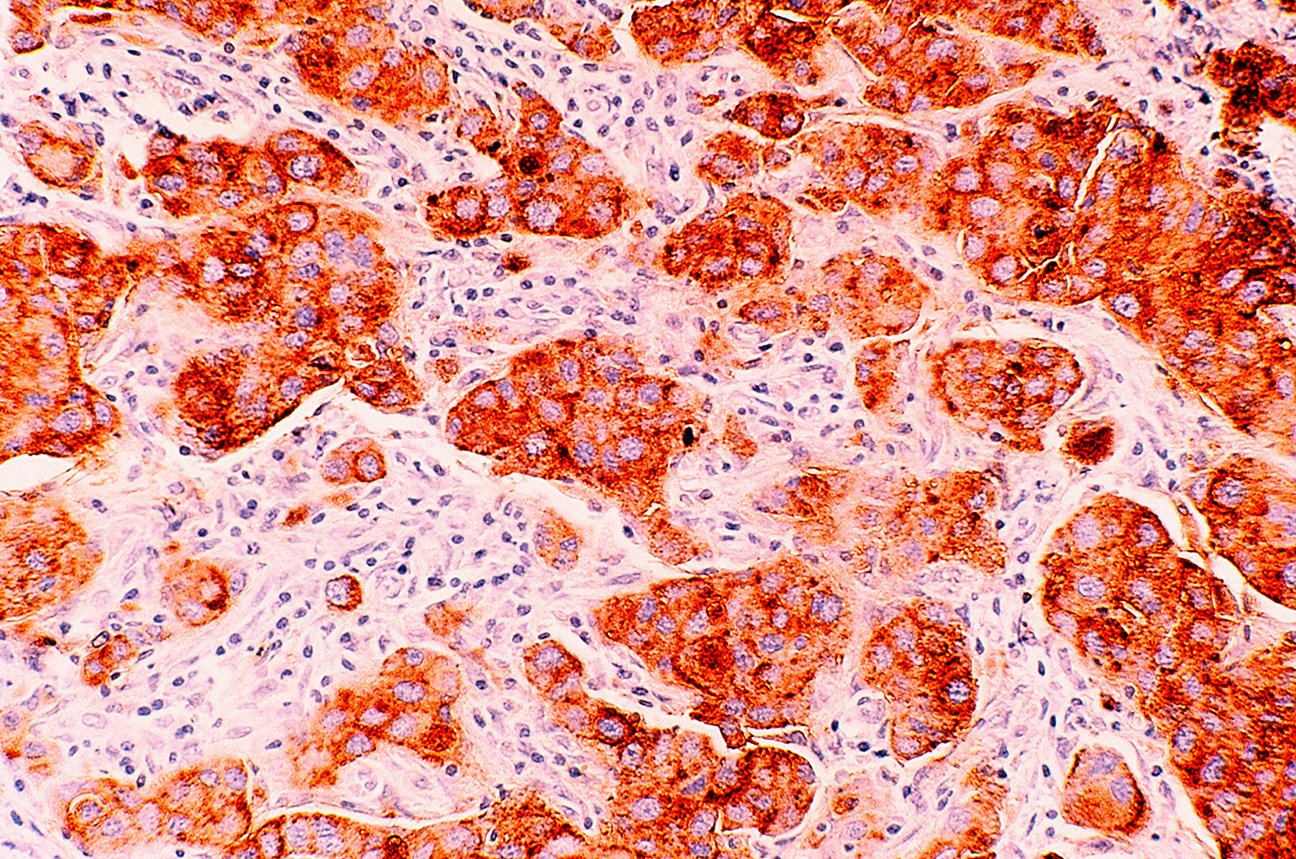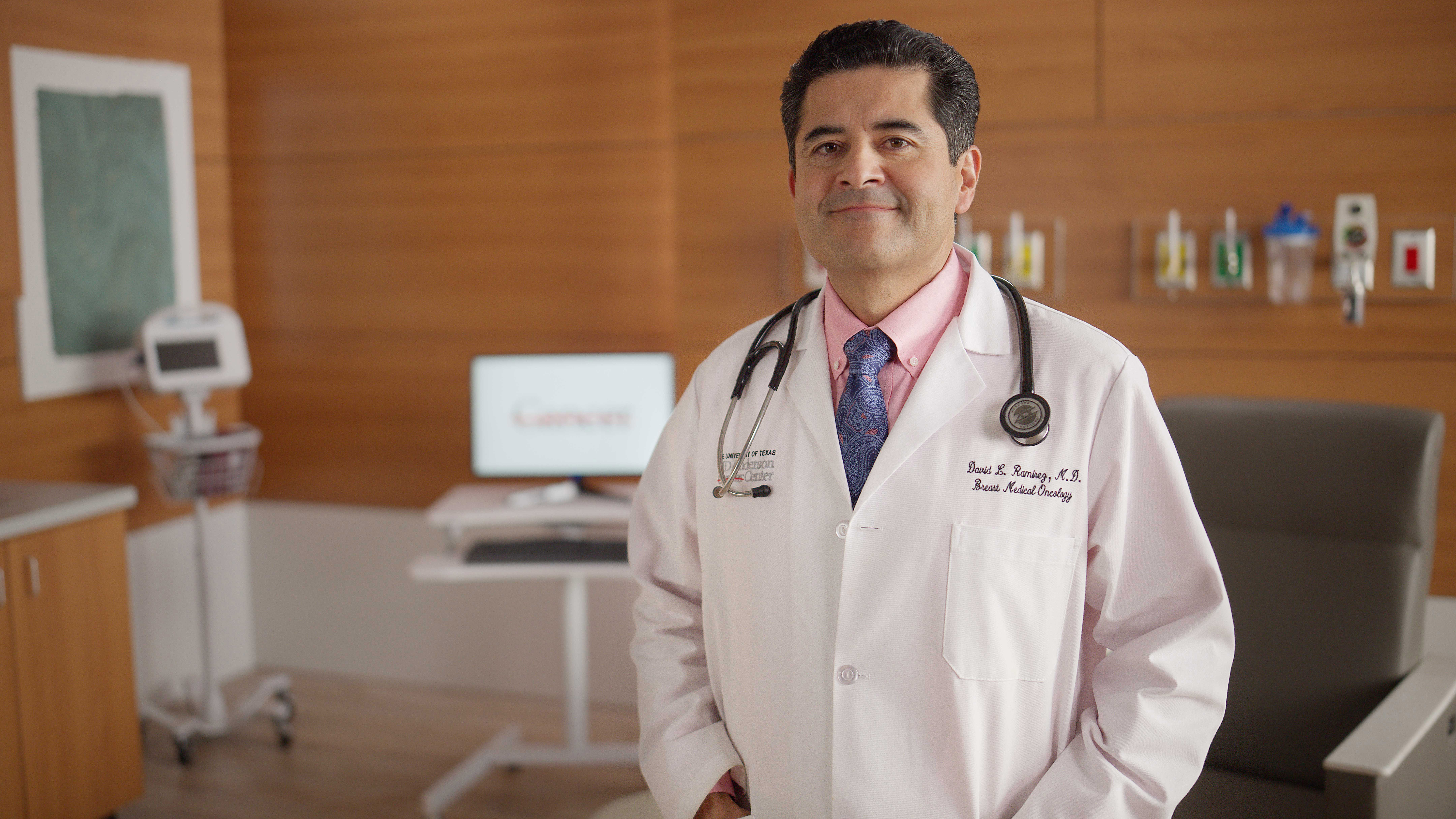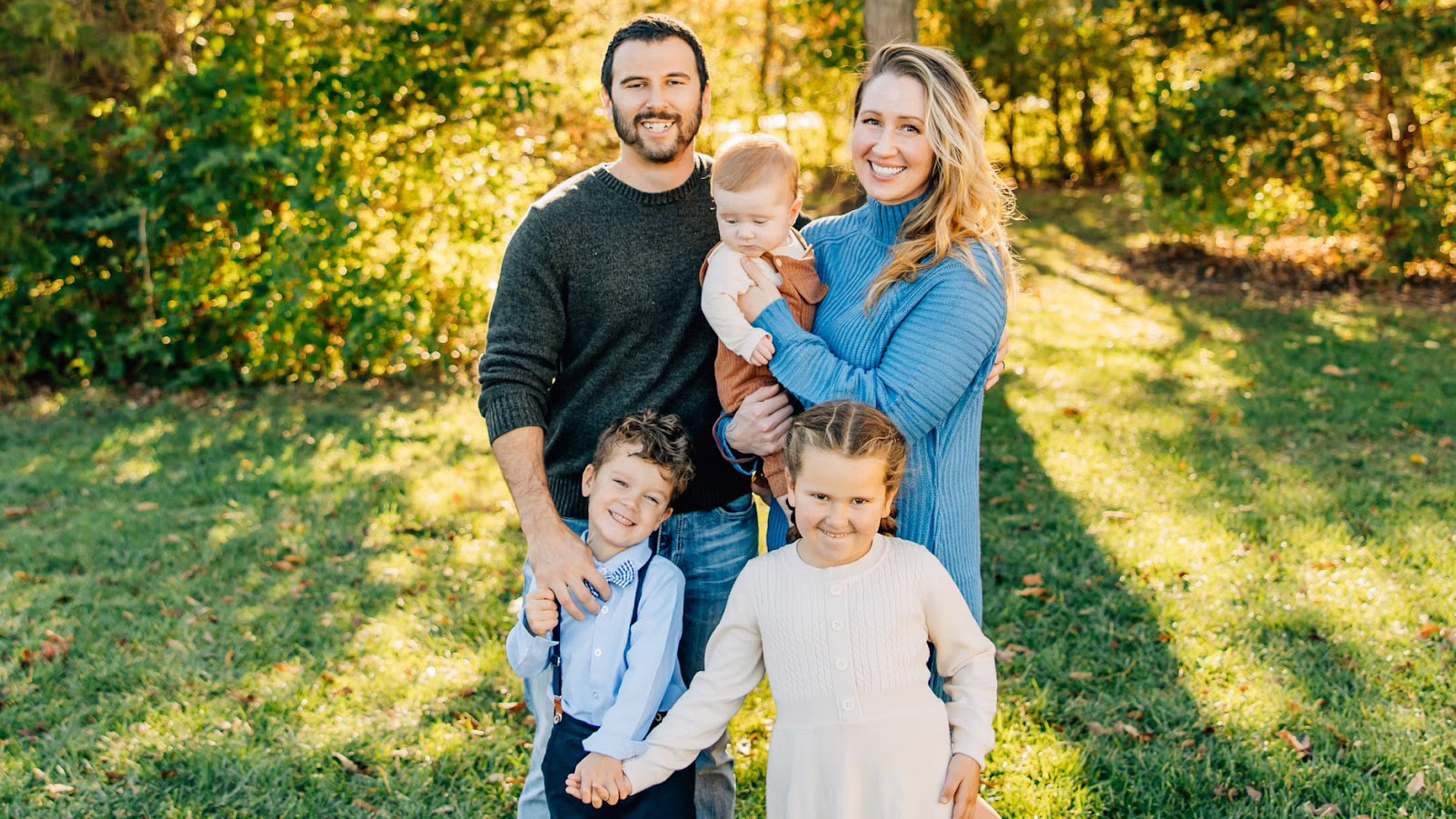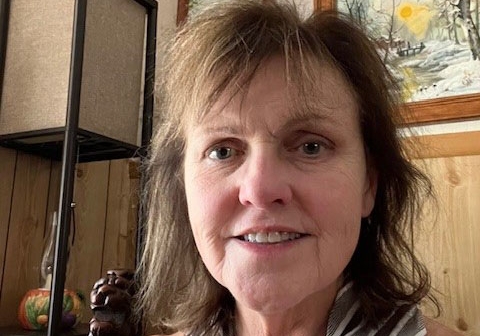- Diseases
- Acoustic Neuroma (14)
- Adrenal Gland Tumor (24)
- Anal Cancer (66)
- Anemia (2)
- Appendix Cancer (16)
- Bile Duct Cancer (26)
- Bladder Cancer (68)
- Brain Metastases (28)
- Brain Tumor (230)
- Breast Cancer (718)
- Breast Implant-Associated Anaplastic Large Cell Lymphoma (2)
- Cancer of Unknown Primary (4)
- Carcinoid Tumor (8)
- Cervical Cancer (154)
- Colon Cancer (164)
- Colorectal Cancer (110)
- Endocrine Tumor (4)
- Esophageal Cancer (42)
- Eye Cancer (36)
- Fallopian Tube Cancer (6)
- Germ Cell Tumor (4)
- Gestational Trophoblastic Disease (2)
- Head and Neck Cancer (6)
- Kidney Cancer (124)
- Leukemia (344)
- Liver Cancer (50)
- Lung Cancer (288)
- Lymphoma (284)
- Mesothelioma (14)
- Metastasis (30)
- Multiple Myeloma (98)
- Myelodysplastic Syndrome (60)
- Myeloproliferative Neoplasm (4)
- Neuroendocrine Tumors (16)
- Oral Cancer (100)
- Ovarian Cancer (170)
- Pancreatic Cancer (164)
- Parathyroid Disease (2)
- Penile Cancer (14)
- Pituitary Tumor (6)
- Prostate Cancer (144)
- Rectal Cancer (58)
- Renal Medullary Carcinoma (6)
- Salivary Gland Cancer (14)
- Sarcoma (236)
- Skin Cancer (296)
- Skull Base Tumors (56)
- Spinal Tumor (12)
- Stomach Cancer (60)
- Testicular Cancer (28)
- Throat Cancer (90)
- Thymoma (6)
- Thyroid Cancer (98)
- Tonsil Cancer (30)
- Uterine Cancer (78)
- Vaginal Cancer (14)
- Vulvar Cancer (18)
- Cancer Topic
- Adolescent and Young Adult Cancer Issues (20)
- Advance Care Planning (10)
- Biostatistics (2)
- Blood Donation (18)
- Bone Health (8)
- COVID-19 (362)
- Cancer Recurrence (120)
- Childhood Cancer Issues (120)
- Clinical Trials (628)
- Complementary Integrative Medicine (24)
- Cytogenetics (2)
- DNA Methylation (4)
- Diagnosis (230)
- Epigenetics (6)
- Fertility (64)
- Follow-up Guidelines (2)
- Health Disparities (14)
- Hereditary Cancer Syndromes (124)
- Immunology (18)
- Li-Fraumeni Syndrome (8)
- Mental Health (118)
- Molecular Diagnostics (8)
- Pain Management (62)
- Palliative Care (8)
- Pathology (10)
- Physical Therapy (18)
- Pregnancy (18)
- Prevention (898)
- Research (392)
- Second Opinion (74)
- Sexuality (16)
- Side Effects (604)
- Sleep Disorders (10)
- Stem Cell Transplantation Cellular Therapy (216)
- Support (404)
- Survivorship (322)
- Symptoms (184)
- Treatment (1776)
Husband and wife face dual breast cancer diagnoses
8 minute read | Published October 01, 2021
Medically Reviewed | Last reviewed by an MD Anderson Cancer Center medical professional on October 01, 2021
Teresa and Billy Mayo have shared almost everything during their 46-year marriage. But the couple recently shared something they never anticipated: breast cancer.
Teresa was diagnosed in 2018, and Billy in 2020.
“We thought we were done with breast cancer when Teresa finished treatment,” Billy says. “It never occurred to me that I could get breast cancer, too.”
Mammogram signals the first signs of trouble
The couple's story began in December 2017, when Teresa visited her local hospital for a routine mammogram.
“I faithfully got mammograms every December,” she says. “They were always normal – until that one.”
The images showed a suspicious area in the outer portion of Teresa’s left breast.
To confirm or rule out cancer, she underwent a core needle biopsy. This procedure uses ultrasound images to guide a special biopsy needle into the breast tumor. An attached vacuum device suctions tissue from the tumor into the needle, and the samples are sent to the lab for analysis. The results would be available in five to seven days, the radiologist said.
“How could I possibly wait that long?” Teresa asks. “I was like a cat on a hot tin roof.”
Three days later, her family doctor phoned with an unexpected request: “Can you drop by my office? We need to talk.”
“That’s the moment I knew I had breast cancer,” Teresa says.
Teresa’s invasive lobular carcinoma diagnosis
With Billy by her side, Teresa listened intently as the doctor shared her diagnosis: invasive lobular carcinoma, a type of cancer that begins in the milk-producing glands (lobules) of the breast, then invades the surrounding breast tissue. Teresa would need surgery.
“My mind immediately jumped to MD Anderson,” she recalls.
Instead of following up on her doctor’s referral to a local surgeon, she went home and filled out MD Anderson’s online self-referral form.
“MD Anderson is the top-rated cancer hospital in the country,” she says. “That’s where I wanted to be.”
In good hands at MD Anderson The Woodlands
Teresa’s first appointment was at MD Anderson The Woodlands, just 13 miles from her home north of Houston. When she arrived, she was anxious and didn’t know what to expect.
“I asked God to give me a sign that everything would be OK,” she recalls.
At that moment, a woman who attends Teresa’s church rounded the corner. The two were surprised to see each other. As fate would have it, the woman was a nurse who worked with Craig Kovitz, M.D., Teresa’s new oncologist.
“I started to relax,” Teresa says. “I knew I was in good hands.”
MRI produces surprise results
Kovitz spelled out Teresa’s treatment plan: surgery to remove the tumor and reconstruct her breast, followed by radiation to destroy any individual cancer cells that may have remained in the breast after the tumor was removed.
Because the stage I cancer was caught early, Teresa would likely not need chemotherapy. The surgeon would biopsy the lymph nodes near her breast just to make sure. If they were cancerous, chemotherapy would be added to her treatment plan.
“When cancer cells break away from a tumor, they can travel to the lymph nodes. Lymph fluid carries them to other areas of the body, where new tumors can form,” Kovitz explains. “That’s why it’s important to check lymph nodes during breast cancer surgery.”
Teresa underwent an MRI to prepare for surgery. The image measured the grape-sized tumor in her breast at 3.6 centimeters – not the pea-sized 1.3 centimeters reported by her local hospital.
“Lobular breast cancer is difficult to visualize on a mammogram,” says Kovitz. “Instead of forming a distinct lump, it grows in flat sheets or as single cells arranged in a line. It takes special skills to envision and accurately measure a tumor of this type.”
Lumpectomy, breast reconstruction and radiation therapy
Using the new images for guidance, Teresa’s surgical team biopsied the lymph nodes closest to her breast. They were cancer-free. She could skip chemotherapy.
Surgeons next removed the cancerous tissue from her breast through a lumpectomy, a procedure that removes only the tumor plus a small amount of the healthy tissue surrounding it. This ensures that all the abnormal tissue is eliminated.
“Lumpectomy is an effective treatment option for early-stage breast cancer like Teresa’s,” Kovitz explains. “The goal is to remove the cancer while conserving as much of the breast as possible.”
A month after the lumpectomy, Teresa returned to MD Anderson, where plastic surgeons used tissue from her healthy, right breast to reconstruct the missing area in the left one.
“I was very pleased with the results, Teresa says. “Everything looks proportional, and even better than before cancer.”
Then came the final step – six radiation therapy treatments, delivered by radiation oncologist Valerie Reed, M.D.
By the time Teresa’s treatments ended, all signs of cancer were gone.
“Billy and I celebrated,” she recalls. “We thought cancer was in our rear-view mirror, but we soon learned we were wrong.”
Billy’s male breast cancer diagnosis
Only five months after Teresa’s treatment ended, Billy was diagnosed with breast cancer.
“It happened last October when I was drying off after my shower,” he recalls. “Teresa walked into the bathroom, put her hands on my shoulders, and said ‘don’t move.’”
Standing before her husband, Teresa looked intently at his right breast, then his left.
“Your right nipple is inverted,” she said. “Don’t you ever look in the mirror? Haven’t you noticed something’s wrong?”
“I’m a guy,” Billy responded. “I only look in the mirror when I shave or comb my hair.”
Using the pads of her fingers, Teresa felt one breast, then the other. She felt a thickened area in the right breast.
She called the couple’s family doctor, who ordered a mammogram, ultrasound and biopsy.
“Billy and I had an overwhelming feeling of déjà vu,” Teresa says. “We’d been down this road before.”
The doctor called at 7:30 on a Friday night with the results.
“We knew what that meant,” Billy says.
Billy had stage II ductal carcinoma, a form of breast cancer that begins in the milk ducts.
“Many people are surprised to learn that male breasts have milk ducts,” the doctor explained. “However, men lack adequate levels of the hormone prolactin needed to make milk.”
The tumor was just over 3 centimeters large – about the same size as Teresa’s, but more aggressive. It had already invaded more than half the surrounding breast tissue.
“Teresa and I could hear our doctor fighting back tears,” Billy says. “We’ve known her for decades. She’s not only our doctor, but also our friend.”
The moment the call ended, he turned to Teresa. “Well, you know where we’re going,” he said.
“Of course, I do,” Teresa responded. “We’re heading back to MD Anderson.”
Returning to MD Anderson The Woodlands for male breast cancer treatment
The route to MD Anderson The Woodlands was a familiar one.
“I’d taken Teresa dozens of times,” Billy says. “Not only did I know how to get there, but I knew where to park and where the breast clinic was located.”
Giancarlo Moscol, M.D., Billy’s oncologist, recommended a complete mastectomy, followed by 16 chemotherapy sessions and 30 radiation treatments. The entire treatment plan would take nine months to complete.
Mastectomy and lymph node removal
Two weeks later, breast surgeon Elizabeth FitzSullivan, M.D., removed Billy’s right breast. She also removed 40 lymph nodes after finding the cancer had spread.
Four hours after the operation, Billy sat up in bed and ate dinner. That evening, he walked around the hospital floor for 30 minutes. At 5:30 the next morning, he took another half-hour walk, then packed to go home.
“I never needed anything stronger than Tylenol,” he says of his pain level.
Chemotherapy, radiation and a clean bill of health
After recovering at home for six weeks, Billy returned to the hospital to begin chemotherapy. Kovitz prescribed AC-T, a combination of the chemotherapy drugs doxorubicin and cyclophosphamide, followed by treatment with paclitaxel.
A nurse helped Billy prepare for his first infusion.
“I read her nametag, and realized her husband was in the Knights of Columbus men’s church group with me,” Billy says. “Teresa and I have a knack for bumping into MD Anderson nurses who attend our church. We find it comforting.”
With his Hawaiian shirts and straw hat, Billy was a popular figure in the infusion unit. His iconic handlebar moustache fell out after a few treatments. He vowed to regrow it.
“I felt naked without it,” he says.
Despite the COVID-19 pandemic and an ice storm in February, Billy completed all 16 weeks of chemotherapy infusions on time this May. Halfway through, it occurred to him that he should retire from designing and building chemical plants – a job he had held more than four decades.
“I asked myself, ‘I’m 67 years old, why am I still working?’” he says.
“Battling breast cancer is a job in itself.”
Billy’s treatment ended this past July when he completed two months of radiation therapy under the care of radiation oncologist Pamela Schlembach, M.D.
Celebrating being cancer-free
Like Teresa, Billy today shows no evidence of cancer.
To celebrate, the couple are looking forward to visiting their granddaughters, Maggie, 7, and Rosie, 2, in Virginia. Both are fully vaccinated against COVID-19. Recently, they received a third booster dose of the vaccine in preparation for their trip.
“We haven’t seen our granddaughters in two years due to cancer and COVID-19 travel restrictions,” Teresa says. “We can’t wait to hug and squeeze them.”
Advice from a male breast cancer survivor
Teresa and Billy will continue returning to MD Anderson for regular checkups. They each take a daily oral medication to reduce the chances of cancer returning.
Billy now encourages all men, regardless of their health status, to check their breasts each month.
“If you don’t know how, ask your doctor or your spouse to show you,” he says. “Breast cancer is not just a woman’s disease. Men have breasts, too, and we can get cancer.”
Request an appointment at MD Anderson online or by calling 1-888-523-1473.
Related Cancerwise Stories

Men have breasts, too, and we can get cancer.
Billy Mayo
Survivor & Caregiver





